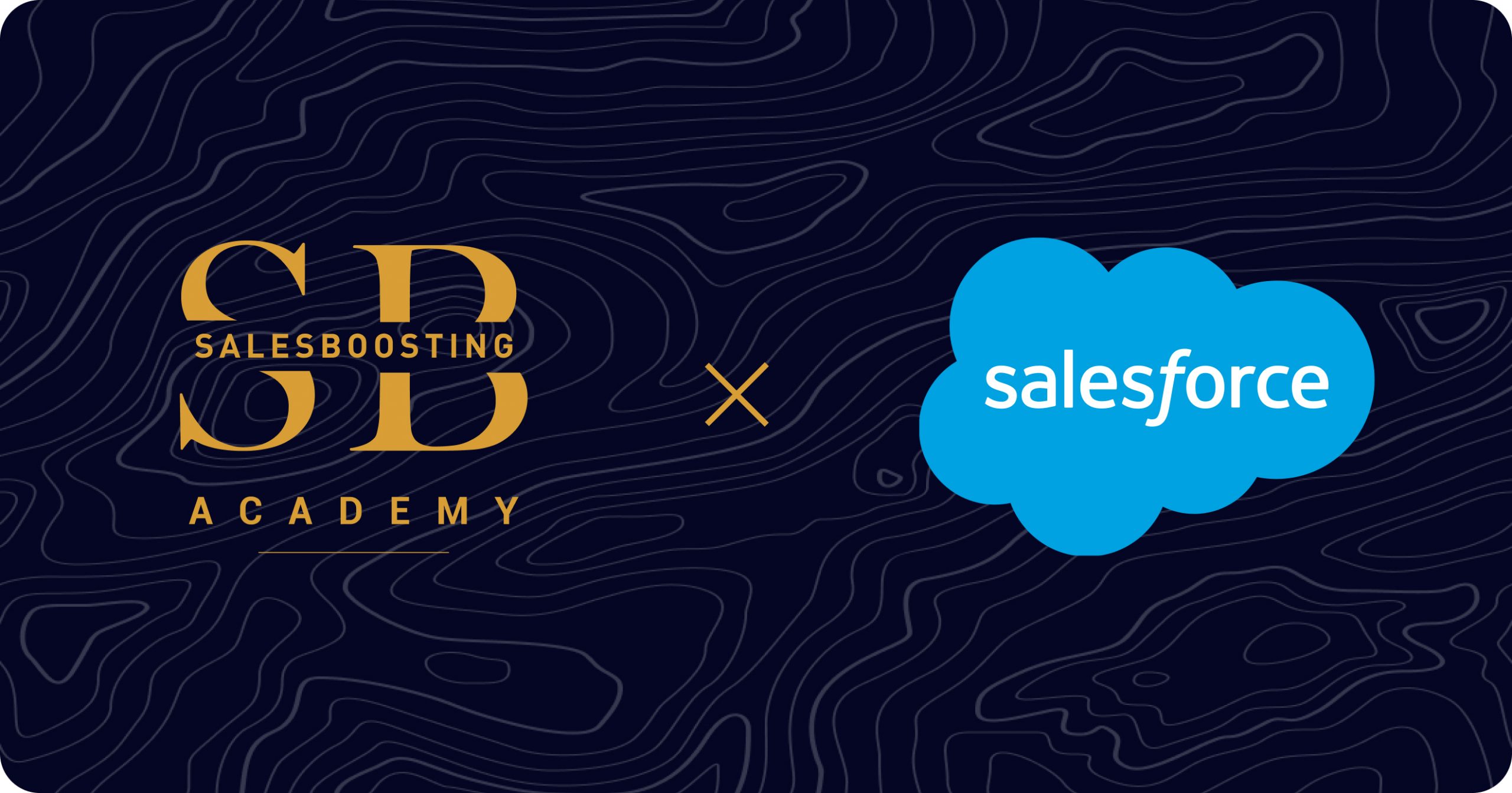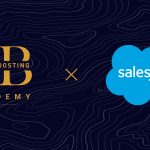SALESBOOSTING FEATURING SALESFORCE
25 April 2022
Over the past 20 years, the world has seen the infiltration of hardware and software into our daily lives, both personal and professional.
In the world of CRM and luxury retail, more and more brands are acquiring the latest hardware technologies to modernize their shopping experience, help them better target their marketing campaigns with the ultimate goal to deliver a unified experience across contact points.
The overall objective of developing operational efficiency is a step forward that these new systems and technologies are helping to provide, trying to impact the business in a more intelligent way and becoming easier and simpler to execute than ever before.
Based on our experience, the future of retail is about client’s experience and the development of the people who serve them, and much less about technology that will remain a facilitator for sales advisors to have more time to focus on other more strategic tasks. Hardware alone is not and will not be the solution to deliver better experiences and to grow sales.
We see in many brands new internal corporate projects that proudly bear the name of a hardware or software system. In our opinion, they could be starting off on the wrong foot, focusing on the technology and not on the benefits for the client or the cultural changes needed to be built around new behaviors. Instead, it would make more sense to start from the client’s journey, the experience that brands want to deliver to their clients, and then use only the technology that enables your brand to do that. So, it is all about building down from the client’s experience you want to deliver first, not building it from the technology up.
The introduction of new technologies often leads to a confusion between technological changes with cultural and behavioral changes. The technology alone changes but not the culture or behaviors that should be tied to it, so in the end, the expected results are disappointing.
Across the spectrum of customer data use, there is often a big gap between untrusted brands with creepy usage of client’s data, ready to sell it and luxury brands who don’t use their client’s data at all. Luxury brands have often remained conservative about using their client’s data and rightly so, as this is a highly sensitive issue. In the luxury sector, client’s trust is more important than the data itself. However, we believe there is a midpoint to be found between the two ends of this spectrum. The key question for brands and their sales advisors is: what are the best practices for using client details and data? Here are some simple tips.
For sales advisors to take personalized action.
The technology and the latest CRM tools exist to better serve clients, not to serve a hardware system that brings no value to the organization or the client, and for any organization the primary goal should be to use that data. As Churchill said, “I never worry about action, but only inaction”. Operational efficiency should be about using client’s data, not just storing it as an asset. Too often, the details of the client are not acquired properly and if so, they are not used at they could or should be.
Privacy and luxury are synonymous. So are personalization and luxury. Luxury will always remain a person-to-person business. At a time when “omni-channel” is the new challenge of luxury players, most retail teams only use an “only-channel” communication approach to be in touch with their clients and often only know how to speak to clients via WeChat or emails (which is often more suited to the client’s business life). One-to-one phone calls or fully personalized video messages could also be used more often. Because these skills are broadly under-developed, most brands practice the same “only-channel” communication, few brands stand out in their communication and thus in the impact of these communications on their sales results.
For sales advisors to explain to their clients what will happen with their details and how it will benefit and bring value to them.
Explain to your clients the services they benefit from, but not hidden from them, to provide better experiences, to make their lives better and nothing else. The data acquired should help sales advisors and brands do their job better, but it should also benefit the client. Data for data’s sake has no point in being shared by a client unless all the benefits are truly explained, and trust maintained. The “why” the details are requested is rarely explained by the sales advisors who ultimately acquire the client’s details.
For sales advisors to build deeper relationships and business, with a point of difference.
We often say :
“If you think retail is about hospitality, we suggest you work at 4 Seasons hotels where the deal is already done when you greet clients.
If you think retail is about telling stories, we suggest you work at a kids’ school.
If you think retail is about serving drinks, we suggest you work at Singapore Airlines.
If you think retail is about technology, we suggest you work at Google”.
Retail is about business and the ability to build relationships to close deals. The business angle and real human connections are the solutions. Technology is interesting in making the business more intelligent, if there is a business angle, a connection and a point of difference in the execution by professional sales advisors adopting the right behaviors. The human brain is meant to have ideas and execute them, not store them.
The Red Bull F1 team has probably one of the best cars on the circuit, and one of the best technologies. However, the driver will be the point of difference in how well he masters the skills of driving under pressure.
The America’s cup boats are all equipped with the highest level of technology, but again it is the crew of the boat that will make the difference between the winners and the losers.
If most brands and luxury groups use the same hardware, how will brands make the difference?
We would like to share a real-life example with you.
Clients don’t get offended when Salesforce reminds you of their birthday. This is the advantage of the technology. However, Salesforce won’t tell you the behaviors you need to execute that birthday reminder properly.
Imagine you are a client of five different luxury brands, all of which use the same Salesforce system. These five brands have saved your birthday in their client portfolio. On your birthday, you will probably receive, as we do, the same birthday messages from these five different brands wishing you a “Happy birthday”.
So, what? Where is the point of difference and the true connection? Does it really bring you value? Is this the best that luxury brands can do, sending a happy birthday message to their clients, as would 7-Eleven, low-cost airlines or your hairdresser would?
Where is the luxury and personal touch, the added value, and benefit to you as a client? Where is the extra service? Are you really touching your client’s heart? Where is the added value of the sales advisor as a human being in a one-to-one personal relationship, as expected in luxury?
Wishing a client, a happy birthday has no return on investment. Helping them or their loved ones celebrate their birthday does. Only then do you really touch his heart.
That’s why SalesBoosting has been created.
Salesforce reminds you of a client’s birthday (that’s the head).
SalesBoosting won’t remind you to send a message to your client on their birthday, like most brands would. SalesBoosting will do something with much more added value to the brand and your client.
It will remind you to send a personalized message one month before the birthday (that’s the heart). SalesBoosting will explain you that you need to call the client or his wife to find out if he/she has planned a gift for him/herself or for her husband whose birthday is coming soon. Now you are in a relationship and in the business not just in the relationship, with a real added value, with a benefit for the client and a strong point of difference. “Touch my heart to touch my wallet” as we often advise.
Strategic selling is what SalesBoosting is all about: giving your sales team not only the ideas to stand out from your competition but also how to communicate a personalized message to the client or his wife. These ideas to touch the client’s heart and how to execute will not come from a hardware system.
SalesBoosting has been created to elevate the client’s experience, humanize the relationship with a business angle at the same time and bring common sense back where it is needed with an operational sense that is unique. It is not about training sales advisors with a tool and capabilities point of view, but about developing them from a business and client satisfaction.
SalesBoosting is about increasing sales, with the help of technology, but with a human common sense, a human business angle based on human experiences. Salesforce and SalesBoosting are both valuable tools but they work much better when they work hand in hand, as the head and the heart do.
Thank you Madiba!









